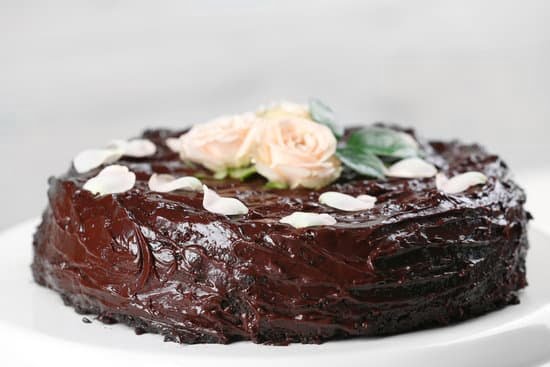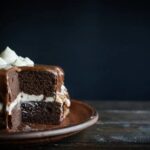In today’s fast-paced world, convenience is key. Time-saving techniques are highly sought after, especially in the realm of baking and cake decoration. This blog post aims to explore the possibility of freezing cakes for later decoration, offering a solution that allows for greater flexibility and freedom when it comes to serving up beautifully adorned confections.
Have you ever wondered if it’s possible to freeze a cake and decorate it later? This question is at the heart of our discussion today. We will delve into the science behind freezing cakes and its impact on texture and taste. Addressing common concerns such as moisture retention and flavor preservation, we will provide you with a comprehensive understanding of how freezing affects your baked creations.
Choosing the right type of cake is essential when considering freezing for later decoration. In this article, we will present you with a list of suitable cake types that can withstand the freezing process without compromising their quality. Moreover, we will offer tips on selecting cakes based on their ingredients and structural integrity, helping you make an informed decision before embarking on your frozen decorating journey.
By embracing the flexibility that freezing cakes offers, you can save valuable time without sacrificing taste or quality. In the following sections, we will guide you through each step of properly freezing cakes for future decoration. Additionally, we will outline key tips for achieving optimal cake texture and taste during the thawing process. To ensure success in decorating previously frozen cakes, we have gathered expert insights from professional bakers who will share their invaluable tips and best practices.
Whether you’re a seasoned baker looking to streamline your processes or simply seeking new ways to enjoy beautifully decorated cakes at your leisure, this article will provide you with all the information you need to confidently freeze cakes for future decoration. So let’s dive in and explore the world of frozen-and-decorated delights.
Understanding the Basics
When it comes to freezing cakes for future decoration, understanding the basics of how freezing affects cake texture and taste is crucial. Many people are apprehensive about freezing cakes due to concerns about the impact on the final product. However, with proper techniques and considerations, frozen cakes can still turn out just as delicious and visually appealing as freshly baked ones.
One of the key factors to consider when freezing cakes is its texture. The freezing process can cause moisture in the cake to form ice crystals, which can potentially result in a loss of moistness. To combat this, it is important to choose a cake recipe that has a relatively higher moisture content. Cakes that are oil-based rather than butter-based tend to retain moisture better when frozen.
Additionally, the type of cake also plays a role in its ability to withstand freezing and maintain its texture. Dense and sturdy cakes such as pound cakes or sponge cakes often freeze well, while delicate and light cakes like angel food cake may not fare as well. It’s essential to select a cake that can handle the freeze-thaw process without becoming too fragile or crumbly.
In terms of taste, properly frozen cakes should not experience significant changes in flavor. The key is to ensure that the cake is tightly wrapped in an airtight barrier before being placed in the freezer. This helps prevent any unwanted odors from seeping into the cake, which could potentially alter its taste. By taking these factors into consideration, you can successfully freeze your cakes without compromising their quality or taste.
To summarize, understanding how freezing affects cake texture and taste is essential for successfully freezing cakes for future decoration. Choosing a recipe with higher moisture content and selecting a suitable type of cake are crucial considerations for maintaining optimal texture after freezing. Furthermore, ensuring proper wrapping techniques will help preserve the original flavor of the cake. By following these guidelines, you can confidently freeze your cakes and look forward to decorating them later without any concerns about the final result.
Choosing the Right Cakes for Freezing and Decoration
Once you’ve decided to freeze a cake for future decoration, it’s important to choose the right type of cake that will hold up well in the freezing process. Not all cakes are suitable for freezing, as some may lose their texture or taste after being thawed. To ensure success, here are some tips for selecting the perfect cake for freezing and decoration.
- Sturdy Cakes: Look for cakes with a denser texture and sturdy structure, as they tend to freeze better compared to light and delicate cakes. Denser cakes such as pound cake, chocolate cake, or carrot cake hold up well during the freezing process and maintain their shape when thawed.
- Buttercream-Free Cakes: If you’re planning on decorating your frozen cakes with buttercream frosting, it’s best to choose a cake that doesn’t already have buttercream in it. The moisture content of buttercream can change during freezing and affect the overall quality of the cake. Instead, opt for cakes that can be decorated with buttercream after thawing.
- Simple Flavors: While complex flavors can be enjoyable, it’s advisable to choose simpler flavor profiles when freezing cakes. Flavors like vanilla or chocolate tend to retain their taste better during the freezing process compared to more delicate flavors such as fruit-infused or citrus-flavored cakes.
- Unassembled Cakes: If possible, select cakes that haven’t been assembled with fillings or frostings prior to freezing. This allows you more flexibility in terms of decorating options once the cake is thawed.
By considering these factors when choosing a cake for decoration after freezing, you’ll increase your chances of achieving optimal results. It’s also important to keep in mind that each recipe might have specific recommendations regarding freezing and decorating, so be sure to consult individual recipes if available.
Step-by-Step Guide
Wrapping and Preparing the Cake
Before freezing a cake for future decoration, it is important to properly prepare and wrap it to ensure optimal freshness and quality. The first step is to let the cake cool completely after baking. This will prevent condensation from forming inside the wrapping, which can lead to soggy or mushy texture once thawed.
Once cooled, carefully remove any excess crumbs from the surface of the cake using a pastry brush or a clean kitchen towel. This step helps to maintain a smooth appearance when decorating the cake later on. If desired, you can also level the top of the cake with a serrated knife for an even surface.
Next, tightly wrap the cake in several layers of plastic wrap. Ensure that no part of the cake is exposed to avoid freezer burn or absorption of unwanted odors. It is also recommended to place the wrapped cake in an airtight container or a heavy-duty resealable bag for extra protection.
Proper Storage and Labeling
To preserve cakes while they are frozen and prevent moisture loss, it is crucial to store them in proper conditions. Place the wrapped cake on a flat surface in your freezer where it won’t be disturbed or pressed against other items. Avoid stacking multiple cakes on top of each other as this can damage their shape and aesthetics.
Label each cake with its name and date of freezing to keep track of how long it has been frozen. It is generally recommended to consume frozen cakes within three months for best results, although some cakes may remain fresh for up to six months if stored properly.
Thawing Techniques
When it comes time to thaw your frozen cake for decoration, there are several methods you can use depending on your time constraints and preferences. The optimal way to thaw a frozen cake is by transferring it from the freezer into the refrigerator 24 hours before you plan to decorate or serve it. This slow thawing process allows the cake to gradually come to room temperature without any drastic changes that could affect its texture.
If you need to thaw the cake more quickly, you can remove it from the freezer and keep it at room temperature for a few hours. However, it is important to monitor the cake closely during this process to ensure it thaws evenly and doesn’t become too soft or dry.
Avoid using microwaves or hot water baths for thawing as these methods can unevenly heat the cake and compromise its texture. Additionally, do not re-freeze a previously frozen cake after thawing as this can lead to quality deterioration.
Perfecting the Thawing Process
Freezing cakes can be a great way to save time and prepare for future decorations, but it’s important to ensure that the thawing process is done correctly to maintain optimal cake quality. Improper thawing can result in a soggy or dry texture, as well as potential flavor loss. In this section, we will discuss the importance of thawing cakes properly and offer various methods and tips to achieve the best results.
Thawing a frozen cake slowly and gently is crucial to maintaining its texture and taste. One method is to transfer the frozen cake from the freezer to the refrigerator several hours (or even overnight) before planning to decorate it. This gradual thawing allows the cake to return to its original moisture levels without exposing it to quick temperature changes that can compromise its structure.
Another option is using the cold water thawing method. Place your packaged frozen cake in a leak-proof bag and submerge it in a cold water bath. Change the water every 30 minutes or so, ensuring that it stays cold throughout the process. The duration of this method will depend on the size of your cake, but generally speaking, you can expect it to take about 30 minutes per pound of cake.
For those who are pressed for time, using a microwave on low power setting can also be an option. However, extreme caution should be exercised as microwaving at too high power or for too long can lead to uneven thawing or even partial cooking of certain parts of the cake.
Regardless of which method you choose, there are some general tips that apply across all approaches. It’s essential not to rush the thawing process; patience is key here. Avoid exposing your cake to direct heat sources such as sunlight or leaving it at room temperature for extended periods. Also, keep in mind that once your cake is fully thawed, allow it some time (at least an hour) before decorating so that any condensation on its surface can evaporate completely.
Thawing a frozen cake may require some planning, but it is well worth the effort to ensure that your cake tastes fresh and maintains its texture. By following these guidelines, you can confidently move forward with decorating your previously frozen cake and enjoy the convenience without compromising on quality.
Expert Tips for Decorating Previously Frozen Cakes
Choose the Right Frosting
When it comes to decorating previously frozen cakes, choosing the right frosting is essential. Some frostings are more forgiving than others when it comes to texture and consistency after being frozen. Buttercream and cream cheese frostings tend to freeze and thaw quite well, maintaining their smoothness and stability.
However, whipped cream frostings may experience some deflation after being frozen, resulting in a less fluffy texture. Ganache can also work well for decorating frozen cakes due to its firm texture and ability to hold its shape. Ultimately, it’s best to choose a frosting that you have had success with in the past or consult professional bakers’ recommendations.
Thaw Gradually
Once your cake is fully thawed, it’s important to allow it to reach room temperature gradually before starting the decoration process. Rapid changes in temperature can cause condensation, which can negatively affect the appearance of the frosting. To ensure a gradual thawing process, remove the cake from the freezer and transfer it to the refrigerator for several hours or overnight. Then, leave the cake out at room temperature for another hour or two before beginning the decoration process.
Use Proper Decoration Techniques
When decorating a previously frozen cake, certain techniques can help ensure a smooth application of frosting and prevent any potential issues caused by freezing. One effective technique is crumb coating – applying a thin layer of frosting on the cake to lock in any loose crumbs and create a smooth base before adding additional layers of frosting or decorations.
This technique helps achieve a clean and polished look for your final design. Additionally, using an offset spatula or bench scraper can be helpful when spreading frosting on previously frozen cakes as these tools provide better control and precision.
Consider Adding Texture
While freezing and thawing might affect some aspects of cake texture, it can also provide an opportunity to experiment with interesting texture effects on your decorated cakes. For example, if the frozen cake has a slightly denser texture after being thawed, consider adding additional layers or swirls of frosting to create depth and dimension. Adding textured elements such as sugar pearls, edible flowers, or chocolate shavings can also enhance the visual appeal of your cake.
Practice and Experiment
Decorating previously frozen cakes may require some practice and experimentation to achieve the desired results. Each cake and freezing process can vary, so it’s essential to approach each decorating project with an open mind and willingness to learn from any challenges that may arise.
Remember that even the most experienced bakers have their share of mistakes along the way, so don’t be discouraged if things don’t go perfectly at first. With patience and persistence, you’ll soon master the art of decorating previously frozen cakes while preserving their taste and quality.
By incorporating these expert tips into your cake decorating process, you can confidently create stunning designs on cakes that have been previously frozen. Remember that practice makes perfect, so don’t be afraid to experiment and try new techniques until you find what works best for you. With these tips in mind, your thawed cakes will become a blank canvas waiting for your artistic touch.
Inspiring Design Ideas
In this section of the article, we will explore some inspiring design ideas for decorated cakes that have been previously frozen. These examples will showcase the creativity and versatility that freezing cakes can offer when it comes to decoration.
One beautiful design idea for a previously frozen cake is a floral-themed cake. Flowers are a popular choice for cake decorations, and freezing the cake beforehand can help preserve the vibrant colors and delicate details of the flowers. Whether using fresh flowers or edible sugar flowers, freezing the cake ensures that they stay intact during the decoration process. This allows for more intricate designs and arrangements without worrying about wilting or damage to the flowers.
Another stunning design idea for previously frozen cakes is a themed cake based on a favorite movie, TV show, or book. Freezing the cake allows for more time to plan and execute elaborate designs that capture the essence of the chosen theme.
For example, a Frozen-themed birthday cake with edible icing figures of Elsa and Anna would be much easier to create if the base cake has been frozen beforehand. The decorations can be added with precision without worrying about compromising the texture or stability of the cake.
Additionally, one can create show-stopping wedding cakes with intricate designs by freezing them ahead of time. Freezing enables bakers to construct tall tiered cakes that may require additional support for stability. The extra time gained from freezing also allows for detailed decorations such as cascading sugar flowers, delicate lace patterns, or hand-painted designs using edible food coloring.
From floral-themed cakes to themed party creations to stunning wedding cakes, freezing cakes prior to decorating them offers countless possibilities in terms of design and intricate detailing. By showcasing these inspiring design ideas, readers can see firsthand how previously frozen cakes can be transformed into works of art while still maintaining their taste and quality.
| Cake Design | Description |
|---|---|
| Floral-themed Cake | A beautiful cake adorned with a variety of fresh, edible flowers. Freezing the cake beforehand ensures that the flowers stay intact and vibrant. |
| Themed Party Cake | An intricately decorated cake based on a favorite movie or TV show theme. Freezing the base cake allows for precise detailing of characters and scenery. |
| Wedding Cake | A tall tiered wedding cake with elaborate decorations such as cascading sugar flowers, delicate lace patterns, or hand-painted designs. Freezing the cakes allows for stable construction and ample time to add intricate details. |
Frequently Asked Questions
As the demand for convenience continues to grow in today’s busy world, many people are looking for ways to save time without compromising on taste and quality. Freezing cakes for future decoration has emerged as a popular technique that allows you to prepare ahead of time and still end up with a delicious and beautifully decorated cake.
In this section, we will address some common questions related to freezing and decorating cakes to help you navigate this time-saving technique with ease.
- Can all types of cakes be frozen?
- How long can I freeze a cake for?
- How should I thaw a frozen cake?
- Can I decorate a previously frozen cake?
While most types of cakes can be frozen, it’s important to choose the right ones that are more suitable for freezing and decorating later. Cakes that have a sturdier texture, such as butter cakes, pound cakes, and sponge cakes, tend to freeze better compared to delicate ones like angel food cake or mousse cake. The denser structure of these cakes helps them retain moisture and resist freezer burn during the freezing process.
Cakes can typically be frozen for up to 3 months without losing their taste or quality. After this period, they may start to develop freezer burn or lose their moistness. It’s always best to label your frozen cake with the date it was stored so you can keep track of its freshness.
Thawing a frozen cake properly is crucial in order to maintain its optimal texture and taste. The best way to thaw a cake is by transferring it from the freezer to the refrigerator and letting it defrost slowly overnight. This gradual thawing process helps preserve moisture in the cake while preventing any drastic temperature changes that could affect its structure.
Absolutely. Once your frozen cake has been properly thawed, you can proceed with decorating it as you normally would with fresh cakes. It’s important to make sure the cake is completely thawed and at room temperature before applying any frosting or decorations. This ensures that the cake has the right consistency for easy handling during the decoration process.
Freezing cakes to decorate later can be a game-changer for busy individuals who still want to impress with beautifully decorated homemade cakes. By selecting suitable cake types, properly freezing and thawing, and following expert tips for decorating, you can create stunning masterpieces without sacrificing time or taste. So go ahead and embrace the freedom and flexibility that freezing cakes for decoration brings.
Conclusion
In conclusion, freezing cakes for future decoration can be a convenient and time-saving technique without compromising on taste or quality. Throughout this blog post, we have explored the basics of how freezing affects cake texture and taste, as well as provided tips on choosing the right cakes for freezing and decoration. We have also outlined a step-by-step guide on properly freezing cakes and discussed the importance of thawing them properly for optimal quality.
By understanding the science behind freezing cakes and following the recommended techniques, readers can confidently freeze their favorite cakes without worrying about moisture retention or flavor preservation. The comprehensive list of suitable cake types and tips for selecting ingredients ensures that readers can choose cakes that will hold up well in the freezer. Additionally, our step-by-step guide on wrapping, air removal, and proper storage containers equips readers with the knowledge they need to successfully freeze their cakes.
Thawing out frozen cakes is equally important for achieving optimal texture and taste. With various thawing methods provided along with their respective timelines, readers can choose the approach that suits their needs best. The tips shared by professional bakers will further guide readers in decorating previously frozen cakes with success. By embracing this technique, readers can enjoy the freedom and flexibility of preparing decorated cakes in advance, allowing them to save valuable time when needed.
Overall, freezing cakes for future decoration allows individuals to balance their busy schedules while still enjoying delicious homemade treats. By following the guidelines outlined in this blog post, anyone can confidently freeze their favorite cakes knowing they will still achieve excellent results when it comes time to decorate and serve them later. So why not embrace this time-saving technique and unlock a world of convenience without sacrificing taste or quality?
Frequently Asked Questions
Can you freeze cake to decorate later?
Yes, it is possible to freeze a cake before decorating it. Freezing cake can be a convenient option when you want to make it in advance and decorate it later. To freeze a cake, it is crucial to let it cool completely after baking.
Once the cake has cooled, wrap it tightly with plastic wrap or aluminum foil, ensuring all sides are covered. It is also recommended to place the wrapped cake in an airtight container or resealable bag for extra protection against freezer burn. When you are ready to decorate, simply thaw the frozen cake in the refrigerator overnight or at room temperature for several hours before proceeding with the decoration.
Can you freeze a cake before decorating?
Absolutely! Freezing a cake before decorating can actually make the process easier and more efficient. By freezing a cake prior to decorating, you can create a firmer surface that will be less prone to crumbling while frosting or adding intricate designs.
However, it is vital to ensure that the cake is adequately wrapped and protected from moisture during the freezing process. The same steps should be followed as mentioned above: allow the baked cake to cool completely, wrap it tightly with plastic wrap or foil, and place it in an airtight container or bag for freezing. Thawing should be done slowly in the refrigerator or at room temperature before commencing with decoration.
Is it better to freeze or refrigerate cake before decorating?
Whether to freeze or refrigerate a cake before decorating depends on various factors such as time constraints and personal preferences. Refrigerating cakes prior to decorating can help keep them fresh for longer periods of time as compared to leaving them at room temperature. However, refrigeration may cause some cakes to dry out slightly if not properly sealed and stored in an airtight container.
On the other hand, freezing preserves cakes even better but requires more time for both freezing and subsequent thawing processes. Overall, if time allows, freezing is often considered preferable because it helps maintain moisture within the cake while making it easier to handle during decoration. However, if you are short on time or prefer a slightly moister cake, refrigeration can be a good option as well.

Welcome to our cake decorating blog! My name is Destiny Flores, and I am the proud owner of a cake decorating business named Cake Karma. Our mission is to provide delicious, beautiful cakes for all occasions. We specialize in creating custom cakes that are tailored specifically to each customer’s individual needs and tastes.





